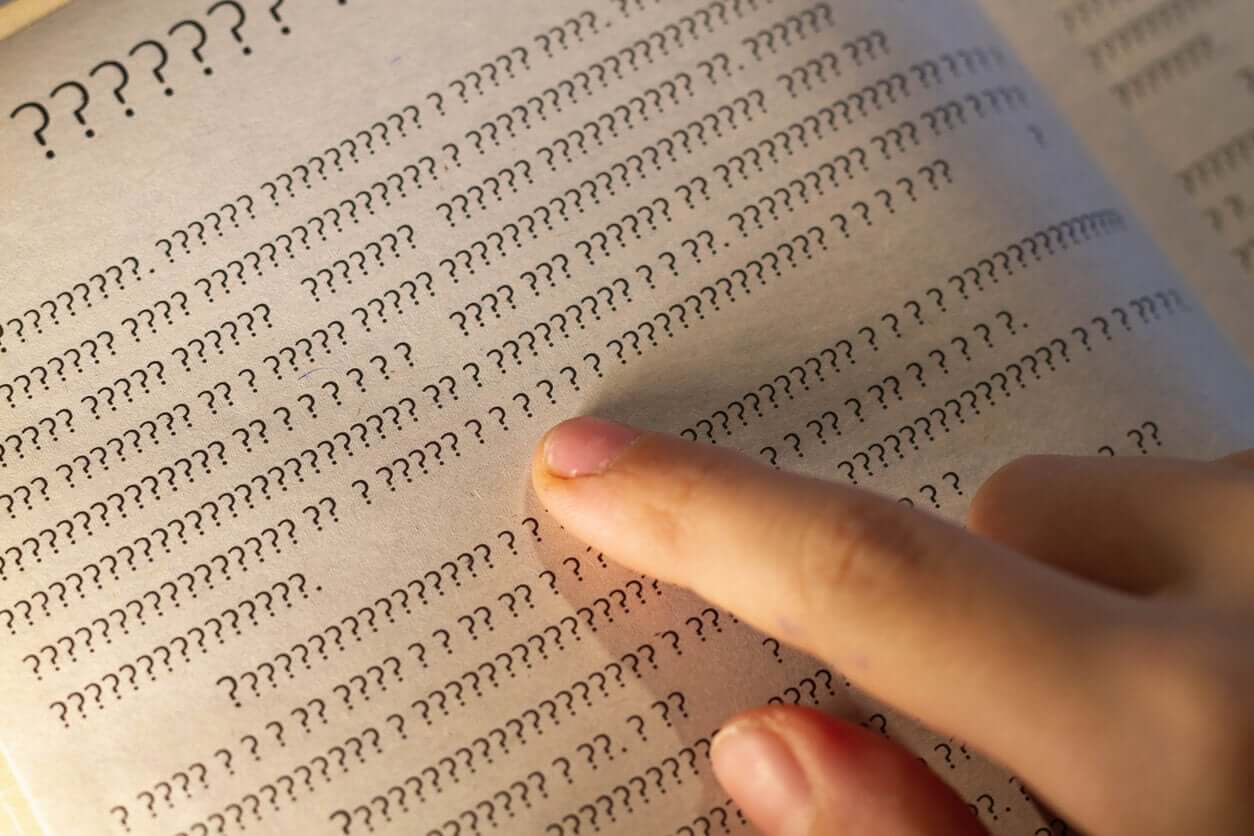Types of Learning Disorders and Their Characteristics


Written and verified by the child educator Pedro González Núñez
Sometimes we think that our children don’t have the capacity to carry out certain tasks or that they don’t put forth enough effort. Perhaps we choose to focus on their virtues and don’t give too much importance to this issue and, therefore, we don’t consider it to be a real problem. But in any of these cases, we may be overlooking some of the various types of learning disorders, all of which deserve our attention.
Knowing the characteristics of these conditions and understanding why they occur will allow us to seek help earlier and start an early and effective treatment.
In general, these disorders are detected when children are of school age and tend to negatively impact their academic performance. Therefore, when children fall behind or we see that they don’t progress adequately in class, it’s crucial to seriously consider this possibility.
The types of learning disorders
Today, we can differentiate the different types of learning disorders based on what’s established by psychologists and experts in the field. For example, according to the criteria of the DSM or Diagnostic and Statistical Manual of Mental Disorders and the ICD 10 or International Classification of Diseases.
In any case, whatever the type of disorder you’re looking at, all of them imply a lower performance than expected in certain academic areas. That is, they represent a deviation in the learning of a child in comparison to the majority of students.
The poor performance of a child due to the different types of learning disorders interferes with their learning and development. In fact, it’s a very important cause of school failure and its prevalence ranges between 2 and 8% of children. Worse still, 40% of these students don’t finish their studies and leave school early.
The classifications of Learning Disorders
As we’ve already seen, the different manuals classify these disorders in different ways, although in a quite similar fashion. In any case, for practical and illustrative purposes, we can talk about three types of learning disorders. We’ll tell you about them in greater detail below.
1. Reading disorders

This type accounts for 80% of learning disorders diagnoses and is also known as dyslexia. It affects 5% of school children and consists of a decrease in performance when reading or a specific difficulty in learning to read and write.
In general, it includes students who are two standard deviations below what is expected at their age. On the other hand, the intellectual quotient of these children is normal and their level of schooling in the other subjects is also usually adequate.
You may be interested in: Dyslexia in Adolescents: Symptoms, Causes and Treatment
2. Disorder regarding written expression
In this case, the child shows very limited writing skills, and these are inadequate for their IQ level, their age, and their level of schooling.
Said limitation infers on the minor’s daily life and, of course, on their academic performance.
The most typical feature of this condition is the lack of organization in written materials, to the point of not understanding what the child writes, either by form or by content. Likewise, severe spelling, grammatical, and punctuation errors are included in this type of disorder.
3. Mathematical disorder
Also known as dyscalculia, it involves difficulty when performing mathematical operations, even the simplest ones. The level achieved in this subject is below usual for their age and their level of schooling.
In addition to the academic impact, this disorder has a negative effect on daily life. The child isn’t able to count, serialize, or understand multiplication tables. Therefore, they fail in various areas, such as in understanding operators and mathematical terms, in recognizing the reading of symbols, and in paying attention in order to perform formal operations.
Specific learning disorder
In the case of DSM-5, all these disorders are grouped under the same name: Specific learning disorder. That is, it’s a single entity that’s characterized by an impediment in the normal development of the child’s academic skills. As a result of it, the following domains are affected:
- Reading: The form is altered, is slower, imprecise, and poorly intoned.
- Comprehension: There are serious difficulties in understanding what is read and contextualizing it.
- Spelling
- Written expression: Grammatical errors are made, paragraphs are poorly organized, and ideas are unclear.
- Calculation: There are difficulties in mastering the sense of numbers.
- Mathematical reasoning: There are difficulties in solving problems and in establishing abstract thinking.

Identify learning disorders as soon as possible in order to treat them as soon as possible
Learning disorders have a strong genetic component and tend to accompany the child from early childhood. However, it’s common for them to become apparent at school when academic demands increase.
Without proper treatment, these conditions don’t improve, as they don’t have a cure. Therefore, once you detect a child with these difficulties, you must go to specialists in the area to make the corresponding diagnosis and implement the necessary therapeutic strategies. In general, different therapies are required to minimize the impact on the child’s life, and the earlier you get started, the greater the probability that you’ll be successful.
Sometimes we think that our children don’t have the capacity to carry out certain tasks or that they don’t put forth enough effort. Perhaps we choose to focus on their virtues and don’t give too much importance to this issue and, therefore, we don’t consider it to be a real problem. But in any of these cases, we may be overlooking some of the various types of learning disorders, all of which deserve our attention.
Knowing the characteristics of these conditions and understanding why they occur will allow us to seek help earlier and start an early and effective treatment.
In general, these disorders are detected when children are of school age and tend to negatively impact their academic performance. Therefore, when children fall behind or we see that they don’t progress adequately in class, it’s crucial to seriously consider this possibility.
The types of learning disorders
Today, we can differentiate the different types of learning disorders based on what’s established by psychologists and experts in the field. For example, according to the criteria of the DSM or Diagnostic and Statistical Manual of Mental Disorders and the ICD 10 or International Classification of Diseases.
In any case, whatever the type of disorder you’re looking at, all of them imply a lower performance than expected in certain academic areas. That is, they represent a deviation in the learning of a child in comparison to the majority of students.
The poor performance of a child due to the different types of learning disorders interferes with their learning and development. In fact, it’s a very important cause of school failure and its prevalence ranges between 2 and 8% of children. Worse still, 40% of these students don’t finish their studies and leave school early.
The classifications of Learning Disorders
As we’ve already seen, the different manuals classify these disorders in different ways, although in a quite similar fashion. In any case, for practical and illustrative purposes, we can talk about three types of learning disorders. We’ll tell you about them in greater detail below.
1. Reading disorders

This type accounts for 80% of learning disorders diagnoses and is also known as dyslexia. It affects 5% of school children and consists of a decrease in performance when reading or a specific difficulty in learning to read and write.
In general, it includes students who are two standard deviations below what is expected at their age. On the other hand, the intellectual quotient of these children is normal and their level of schooling in the other subjects is also usually adequate.
You may be interested in: Dyslexia in Adolescents: Symptoms, Causes and Treatment
2. Disorder regarding written expression
In this case, the child shows very limited writing skills, and these are inadequate for their IQ level, their age, and their level of schooling.
Said limitation infers on the minor’s daily life and, of course, on their academic performance.
The most typical feature of this condition is the lack of organization in written materials, to the point of not understanding what the child writes, either by form or by content. Likewise, severe spelling, grammatical, and punctuation errors are included in this type of disorder.
3. Mathematical disorder
Also known as dyscalculia, it involves difficulty when performing mathematical operations, even the simplest ones. The level achieved in this subject is below usual for their age and their level of schooling.
In addition to the academic impact, this disorder has a negative effect on daily life. The child isn’t able to count, serialize, or understand multiplication tables. Therefore, they fail in various areas, such as in understanding operators and mathematical terms, in recognizing the reading of symbols, and in paying attention in order to perform formal operations.
Specific learning disorder
In the case of DSM-5, all these disorders are grouped under the same name: Specific learning disorder. That is, it’s a single entity that’s characterized by an impediment in the normal development of the child’s academic skills. As a result of it, the following domains are affected:
- Reading: The form is altered, is slower, imprecise, and poorly intoned.
- Comprehension: There are serious difficulties in understanding what is read and contextualizing it.
- Spelling
- Written expression: Grammatical errors are made, paragraphs are poorly organized, and ideas are unclear.
- Calculation: There are difficulties in mastering the sense of numbers.
- Mathematical reasoning: There are difficulties in solving problems and in establishing abstract thinking.

Identify learning disorders as soon as possible in order to treat them as soon as possible
Learning disorders have a strong genetic component and tend to accompany the child from early childhood. However, it’s common for them to become apparent at school when academic demands increase.
Without proper treatment, these conditions don’t improve, as they don’t have a cure. Therefore, once you detect a child with these difficulties, you must go to specialists in the area to make the corresponding diagnosis and implement the necessary therapeutic strategies. In general, different therapies are required to minimize the impact on the child’s life, and the earlier you get started, the greater the probability that you’ll be successful.
All cited sources were thoroughly reviewed by our team to ensure their quality, reliability, currency, and validity. The bibliography of this article was considered reliable and of academic or scientific accuracy.
- Veiga Alén, M. (2006). Dificultades de aprendizaje: detección, prevención y tratamiento. Vigo: IdeasPropias.
- Hudson, D (2017). Dificultades específicas del aprendizaje y otros trastornos. Guía básica para docentes. Madrid. Narcela Editores. Disponible en: https://books.google.es/books?hl=es&lr=&id=UTU1DwAAQBAJ&oi=fnd&pg=PA72&dq=Dificultades+espec%C3%ADficas+de+aprendizaje+y+otros+trastornos+hudson&ots=8egGSo3c5N&sig=RuOUNln1f_WhTr5Bbu9P2rIm1vU#v=onepage&q=Dificultades%20espec%C3%ADficas%20de%20aprendizaje%20y%20otros%20trastornos%20hudson&f=false
- Asociación Americana de Psiquiatría (1995). DSM-IV Manual diagnóstico y estadístico de los trastornos mentales. Washington, Editorial Masson. Disponible en: https://www.eafit.edu.co/ninos/reddelaspreguntas/Documents/dsm-iv-manual-diagnostico-estadistico-trastornos-mentales.pdf
- Asociación Americana de Psiquiatría (2013). DSM-V Manual diagnóstico y estadístico de los trastornos mentales. Washington, Editorial Masson.
This text is provided for informational purposes only and does not replace consultation with a professional. If in doubt, consult your specialist.








